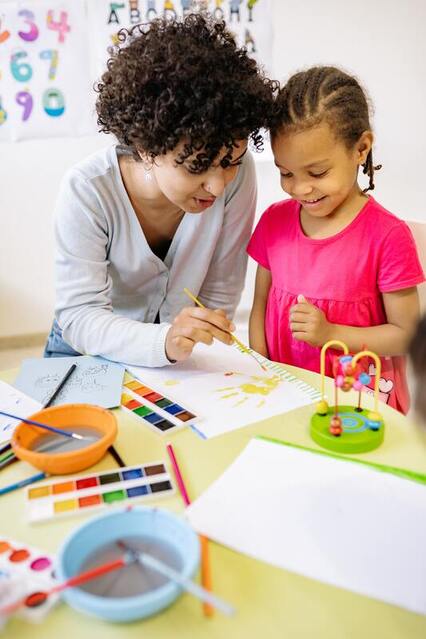|
I have heard this question many a times over, and people are curious to hear more. So let’s get started with what is art therapy, it is the use of art materials for a client to express and explore their internal world of emotions and experiences with the guidance of a trained Art Therapist. Art therapy can be helpful for all ages and different presenting concerns. For example, it can be helpful for trauma as flashbacks and visual imagery is stored in the visual part of the brain, which art therapy is able to access through its visual nature. In addition, when working with trauma it is important for the client to feel the processing of their experiences feel contained and not overwhelming for them, and to also be able to self-regulate during the process; art offers both an important container for the emotions and experiences of trauma, and has the ability to help the client self-regulate in the process as engaging the senses of sight and touch (potentially smell and hearing) supports being more grounded and in the present moment. It is also widely used with children and youth, as the art helps them share their experiences of trauma, stresses, and/or emotions that can be difficult to express in words but can be captured through the art process. Another key thing about art therapy is its distinction from crafts or art class, as the process of art therapy is more important than the final product meaning the emphasis is not placed on the aesthetic value of the completed art but rather the client’s experience of making the art and the insights gained in the process. Other key differences include the therapeutic relationship, having a confidential space, and the goal and focus of the art is inherently different; there is a great article and photo illustrating the differences from Art as Therapy.
When a client first comes to Art Therapy, an art therapist will complete an intake to gather information about how the presenting concern is impacting the client and the different areas of their life, and following this a treatment plan is discussed in collaboration with the client to figure out what would be most helpful to focus on during treatment for the client to feel better. In starting the art therapy process, the therapist will consider what would be most helpful for supporting the client, they will take into consideration what art materials may be most relevant for the client, if they need to consider possible directives or allow the spontaneous process of art making to occur, and how to support the client to feel comfortable in the space during the art making process which may include quiet time, talking or listening to soothing background music. If you are looking to find an art therapist within Canada in your local area, please refer to the Canadian Art Therapy Association Art Therapist Directory. Lastly of what I want to include in the article is additional information for people to read if they want to learn more about art therapy: 1. Ontario Art Therapy Association Information, and 2. Canadian Art Therapy Association Information. Stay tuned for next week’s article which is series 2 of 2 about the benefits of Art Therapy! If you need additional support reach out to me, I am Nicole Levy, and I am here as your helping hand, let’s get started, book your complimentary initial consult today https://www.mindfulhealingjourney.ca/#/
0 Comments
Leave a Reply. |
AuthorI am a Registered Psychotherapist and Art Therapist. And I have been writing this blog since May 2021 about various topics including parenting, supporting adult and child mental health, and holistic approaches. The intention of this blog is to provide resources and information to others, however it is not intended to take the place of therapy. If you have any questions about anything written please reach out to me. Archives
March 2024
Categories |
Telephone |
|


 RSS Feed
RSS Feed